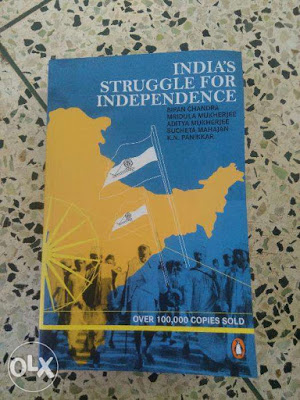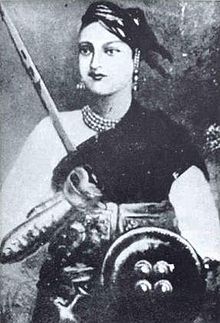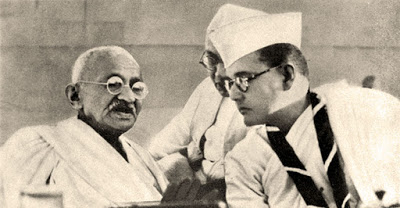Started reading this book almost 2 years back, before Dec 2015 floods. I learned a HELL lot and as with any book that I read, this one too is a big Eye opener.

Intent of Post
The intent of this post is to summarize my understanding of Independence Struggle, with the hopes that any Social worker might benefit from this and get a bigger picture.
Few points:
- I am not going to write the actual story of Independence struggle.
- I am not going to share any inspiring stories from the struggle.
- But I am going to relate the Independence struggle with Social initiatives, that I see now, in my super limited Social circle.
Part 1: Rebellions and Uprisings – Emotional Struggles / Rage
Almost till the end of 19th century, most of the Struggles were initiated for very localized problem,
- Tax burden, Poverty, Hunger and Death.
- Restrictions in following established, age old social rules.
- A biased (towards Englishmen) system of Injustice, from Police, to Politics, to Court.
And all the struggles were revolved around solving those local problems, by appealing to / protesting against / terrorizing the local Government, to revert back to the old state. People didn’t even realize it was the rule of the British empire, which is the root cause of most problems. Peasants, Industry workers, Religious people, Tribals fought to reclaim their localized cause in a localized region.
Some examples:
- Veerapandiya Kattabomman revolt against British to keep them out of his Fort. He is fine, as long British stayed away from his territory. British rule in the rest of the India is not his concern.
- Rani Lakshmibai, the Rani of Jhansi, fought bravely against British to recapture her Fort. British rule in the rest of the India is not his concern.
- 60,000 Brave men of Sathals tribe fought against British to recapture their Hills. Of which, 15,000 were slaughtered with gun shots. Their only concern is recovering their home, their hill and they fought for it. It never crossed their mind that as long as the British rules in here, they will never get what they want.
100s of such examples were given the book. To summarize, early strugglers
- Didn’t have a bigger picture of `Rule of British empire` being the root cause of most of the problems.
- Since they didn’t have a bigger picture, obviously they didn’t have the bigger ambition of Making foreigners Quit India,
- Since the very nature of stuggle is local problems, they are not connected with others who is fighting somewhere else, for the same problem. For eg., If Jhansi Rani, Kattabomman and all kings joined hands, they might have given a bigger challenge to British. But they didn’t join hands, fought and died separately.
- Britishers colonized almost the whole planet through various means from the ways of Military, Trade, Annexations, etc., They are the master minds of Colonization. Early struggles didn’t realize that. They didn’t have a accurate, clear definition of their Enemy.

Part 2: Economic Critique, INC and Intellectual Struggles
It was from the late 19th century, after learning from the failures of brutal struggles, the intellects start gathering around and started waging an Intellectual war. They
- started analyzing the Social problems,
- understood British rule is the root cause of all economic problems,
- hence defined their Enemy,
- also figured out social evils within ourselves,
- started with the Legal systems, Courts,
- then jumped in Politics, whenever required,
- jumped into constructive protests, mass struggles, whenever required,
- raising the awareness among people that British rule is the root cause of all economic, political problems,
- bringing them out in streets,
- increasing their strength year by year,
- and eventually won the Throne from British empire.

My thoughts:
Looking around here in Chennai, I see atleast
- 2 dozen active NGOs working for Social welfare
- with 1000s of dedicated Volunteers
- handful of clean Bureaucrats fighting from inside the system
- handful of selfless people trying their Luck at Politics
Comparing this with the Part 1 of Independence struggle, I wonder If what I see is almost 1 to 1 match.
- No bigger picture,
- No bigger ambitions,
- Null to very little coordination with others working in same domain
- No definition of our Enemy
2011 India Against Corruption movement was perfect exception. It had a clear goal, bigger picture, bigger ambitions, a clearly defined Enemy: Corruption. But we know the story now.
So now my billion dollar question, how long till we evolve to Part 2, with coordinated efforts for a Grand plan against a clearly defined Enemy?
With this post, I hope to put the same billion dollar question in the minds of Social activists around me. That should be enough for now, I think.
Hint: Climate Change is Coming!

Few last words on the Book
It was a very great read, inspiring, eye opening. But I was little upset with few things. I do understand not all stories, freedom fighters can be covered in a single book. I didn’t expect
- the brave stories of Tiruppur Kumaran,
- inspiring actions of Arya Bashyam,
but it is very disappointing not to see
- `Bhimrao Ramji Ambedkar` mentioned atleast once,
- No big mentions of Forward Bloc of Netaji
Reminded myself that History is written by Humans, who are inherently biased, have social pressures. Reminded myself this quote:
“History is written by winners“
PS: If I am wrong about any Historical fact or my understanding of current scenario, please enlighten me. I am open to discussion. Big thanks to my Dear friend Alexraj for giving this book.
Without knowledge of the past there is no future
